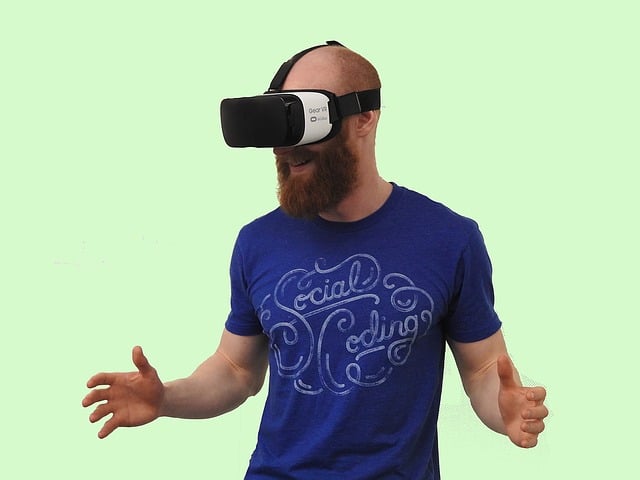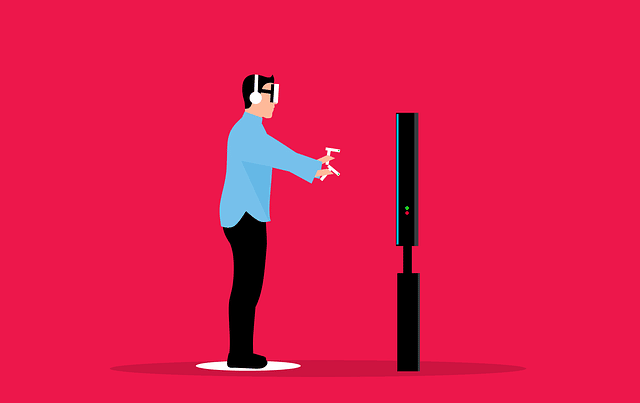
AR is making its way in technology across industries, from healthcare and education to transport and retail. It has been around since the 90s, ever since the famous Pokémon Go video game came to life.
According to Goldman Sachs estimates, AR/VR is projected to grow into a $95 billion market by 2025. Now, it is about to make a huge impact on web design.
Developers have started creating plugins that use AR to produce unique, exclusive content, expand their content options, play with users’ emotions, and provide a high-end user experience for their users.
The power of AR in web development is outstanding. To help you get a bigger picture of how AR can help build unique websites and how effective it can be, we’ve listed a few amazing cases.
But first, let’s explain what AR is!
Contents
What is AR?
In AR, you can see the objects that are layered over reality. Besides seeing the real world around them, users can also see fabricated images in their surroundings, interacting with reality.
In a nutshell, AR is the bridge between reality and virtual reality. One more huge benefit of this technology is that it allows you to do certain activities based on where you are currently located.
AR can be used on a variety of devices, from desktop sites and mobile sites to wearable technology and smartphone apps. One famous example is a Snapchat filter that lets you take a selfie with additional layers like dog ears, babyface, different hair color, etc.
However, AR is also the subject of criticism. For instance, Google stopped selling their Google Glass wearables in 2015 after complaints about other people who used the glasses to violate someone’s privacy.
AR in Web Design — Use Cases

Shoppers usually want to know as much as possible about a product before they decide to buy it. And if a certain company is selling tangible products, shoppers might want to view the product from different perspectives. This is where AR can help significantly.
A 360 degrees view provides users with a unique experience, allowing them to take control and explore the product without other people’s help. Of course, pictures do help, but they do not let the viewer almost feel the product, like when they view it from different angles.
While there are some websites already using this amazing feature, there are still websites that could benefit greatly from it. For example, the eCommerce industry can leverage AR to allow their customers to get a sense of or get a better look at the product.
One of the companies already implementing AR is Volvo. It allows users to spin the car and explore its exterior. It most definitely allows them to have a clear view of their desired Volvo vehicle and how it differentiates itself from the rest on the market.
Personalized Customer Experience
In the sea of competitors, businesses are looking for ways to attract new customers and retain existing ones. And with so many things on the plate, customers need something to shake them up, something that would make them go wow.
According to a well-known Miami web design company, gamification is one of the ways businesses try to enhance sales, brand awareness, and customer loyalty.
People generally like to compete. Giving them something to play with to win a badge, a special discount, or free shipping is enough to keep them entertained and make them want to learn more about the product. AR creates this kind of experience. For instance, Lego Store offers an exciting game of catching ghosts.
On top of this, AR can be used to make shoppers’ living space personalized and help them view what a certain product would look like in their home or a favorite room.
These kinds of recommendations can be used in a variety of retail sectors, including electronics, beauty, sports gear, clothing, depending on shoppers’ choice.
Virtual or self-guided tours for entertainment, arts, and travel

There are so many reasons why you should leverage AR, especially if you work in the industry of entertainment, travel, or arts. These fields offer many opportunities for improvement and allow people to really feel the idea behind a work of art or get more insights into a place they are vising. Pretty amazing, right?
For instance, mobile apps like City Guide Tour offer an opportunity for users to find out more about the places of interest in a city, like museums, galleries, parks, landmarks, restaurants, theatres, and other facilities.
Also, there are mobile apps that allow you to go on guided tours from the comfort of your home, which was quite a convenient feature during these times of uncertainty and travel restrictions when we had to stay home.
On top of this AR-powered glasses can significantly boost the customer experience as it gives an element of fun. Also, many people have mobile phones with AR capabilities, allowing them to explore a world of amazing opportunities.
Another interesting use case for AR is navigation. Using maps and filling them out with location-based triggers can help users easily get around a certain place. Furthermore, when they walk around and point their phone at any object, they can get information on that object through labels.
This particular use case can apply to warehouses and logistics, where workers need to locate certain objects. AR can provide them with the right information at the right time, which can significantly improve the process of picking and packing, assembly, assisting with the training of warehouse staff and inventory management.
With the AR navigation system, each worker can see the ideal route to find the goods from their list. On top of this, through automated barcode scanning, the system can confirm that the worker has come to the right place and picked the right object.
AR in Education
Today, many universities, schools and other educational institutions are starting to see the potential of AR and use it to improve their services.
Overall, AR significantly enhances our ability to learn, drives more engagement and has the potential of increasing our attention span.
Everybody’s eyes are glued to their smartphones. Young people spend hours browsing the web. So, if educators could find a way to use this potential to improve the academic outcome and the learning experience, this could have an enormous impact on education in general.
Voice Interaction
More and more web designers are using AR to enhance customer experience through voice commands. This has proven to be a major success in many industries, from e-commerce to gaming.
Magic Leap, a leader in enterprise AR, offered an amazing shopping experience solution to its users. In their explainer video, a pregnant woman was using voice commands to order things that she would use in her baby’s room. So, she used voice technology to make a list of things she wanted to buy and then purchased them.
In today’s fast-paced digital age, users don’t have much time for typing and clicking. This is why voice technology empowered by AR will have a revolutionary impact on both web design and user experience on the whole.
Voice technology empowered by AR enables faster results for the users and creates a more humanized experience.
The Future of AR
AR can have a huge impact on web development. However, before using AR to improve your web design, you need to get a clear understanding of your customers.
This will help you truly recognize their needs and requirements and assess whether AR can help you make a significant change.
